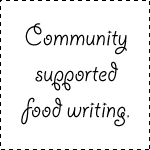Phytoremediation at ARCAM
The shipwreck
contains the ship
May 6, 2011

The Shipwreck Contains the Ship, Urbaniahoeve installation at ARCAM in conjunction with Farming the City
Saturday 7 May at 16.00h, is the closing event of the Farming the City exhibition at ARCAM. URBANIAHOEVE’s phytoremediation installation on ARCAM island, titled ‘The Shipwreck’ will be dismantled and distributed to guests. Do not miss the only opportunity to taste 6 week old hyperaccumulators fed on Oosterdok water and to take home a big block of highly polluted spinach.

Planting phytoextractors, phytostabilisors, and vegetal caps at ARCAM Island
From the Ancient Greek phyto, for plant, and the Latin, remedium, to restore balance, phytoremediation bridles the natural properties and chemical dynamics of specific plant families to repair polluted sites and soils. Used properly, it is considerably less expensive, less dangerous to the environment, and ultimately more effective than the practice of digging out ground material and resituating it from one site to another.

T=spinach, H=mustard, E=clover, S=phacelia, H=spinach, I=clover, P=mustard, 3 techniques
A complex web of interconnected traits and characteristics ensures that that the stationary chemical factories we call plants, get what they need where they are. While some plants excel at accumulation, others do not. For example, distributing toxic metals from their roots up to their fruit is not what fruit trees do. One urban agriculture solution to heavy metal contamination can be to heavily plant orchards and thoroughly carpet their beds with nectar-rich groundcovers.
Certain plant characteristics can restore soil health over time by generating enzyme fields that spawn flurries of microbial activity around their roots. Just two (of many) phyto- techniques used to repair polluted ground with living plants are: phytoextraction and phytostabilisation. Urbaniahoeve contributes a new technique to this list, which we have named, The Shipwreck Contains the Ship, in which we recontextualise urban soil pollution as a means to its own solution. Our contaminated urban soils provide both the necessity and the opportunity to implement city-wide urban agriculture. No baby, no bathwater. The shipwreck contains the ship.
-
Saturday May 7, ARCAM 16:00h
ARCAM, Amsterdam Centre for Architecture

Watering the Shipwreck with polluted and semi-salinated water from the Oosterdok
debra at 23:09 | | post to del.icio.us















